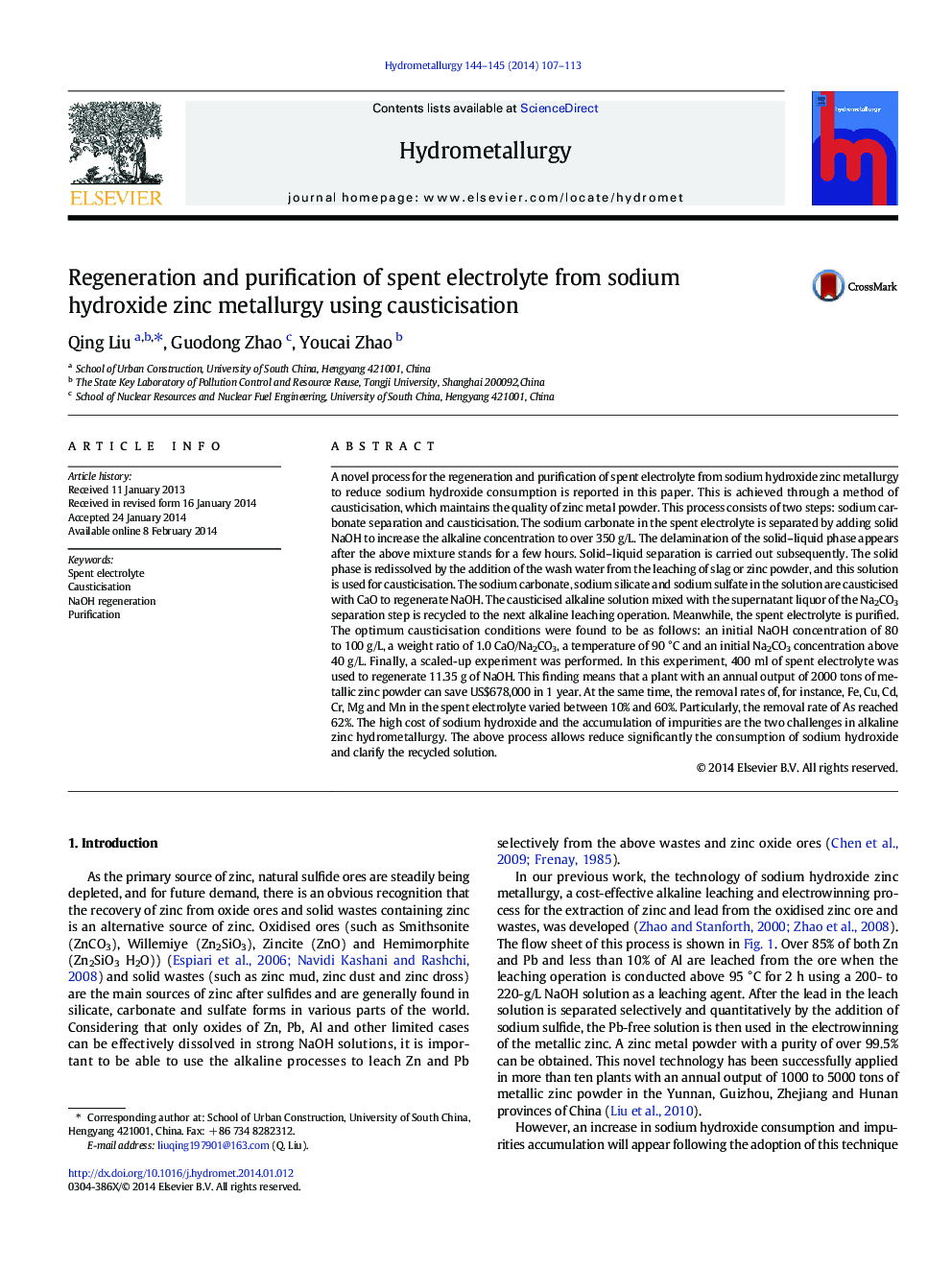| کد مقاله | کد نشریه | سال انتشار | مقاله انگلیسی | نسخه تمام متن |
|---|---|---|---|---|
| 212202 | 462036 | 2014 | 7 صفحه PDF | دانلود رایگان |
• A process of regeneration and purification of spent electrolyte is developed.
• This process consists of a separation unit and a causticisation unit.
• Four hundred milliliters of spent electrolyte can result in the regeneration of 11.35 g NaOH.
• The removal rates of the impurity ions were between 10% and 60%.
• Sodium hydroxide zinc metallurgy will be further developed through this process.
A novel process for the regeneration and purification of spent electrolyte from sodium hydroxide zinc metallurgy to reduce sodium hydroxide consumption is reported in this paper. This is achieved through a method of causticisation, which maintains the quality of zinc metal powder. This process consists of two steps: sodium carbonate separation and causticisation. The sodium carbonate in the spent electrolyte is separated by adding solid NaOH to increase the alkaline concentration to over 350 g/L. The delamination of the solid–liquid phase appears after the above mixture stands for a few hours. Solid–liquid separation is carried out subsequently. The solid phase is redissolved by the addition of the wash water from the leaching of slag or zinc powder, and this solution is used for causticisation. The sodium carbonate, sodium silicate and sodium sulfate in the solution are causticised with CaO to regenerate NaOH. The causticised alkaline solution mixed with the supernatant liquor of the Na2CO3 separation step is recycled to the next alkaline leaching operation. Meanwhile, the spent electrolyte is purified. The optimum causticisation conditions were found to be as follows: an initial NaOH concentration of 80 to 100 g/L, a weight ratio of 1.0 CaO/Na2CO3, a temperature of 90 °C and an initial Na2CO3 concentration above 40 g/L. Finally, a scaled-up experiment was performed. In this experiment, 400 ml of spent electrolyte was used to regenerate 11.35 g of NaOH. This finding means that a plant with an annual output of 2000 tons of metallic zinc powder can save US$678,000 in 1 year. At the same time, the removal rates of, for instance, Fe, Cu, Cd, Cr, Mg and Mn in the spent electrolyte varied between 10% and 60%. Particularly, the removal rate of As reached 62%. The high cost of sodium hydroxide and the accumulation of impurities are the two challenges in alkaline zinc hydrometallurgy. The above process allows reduce significantly the consumption of sodium hydroxide and clarify the recycled solution.
Journal: Hydrometallurgy - Volumes 144–145, April 2014, Pages 107–113
